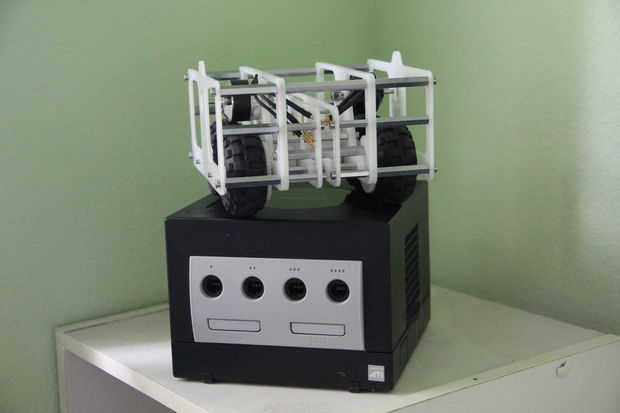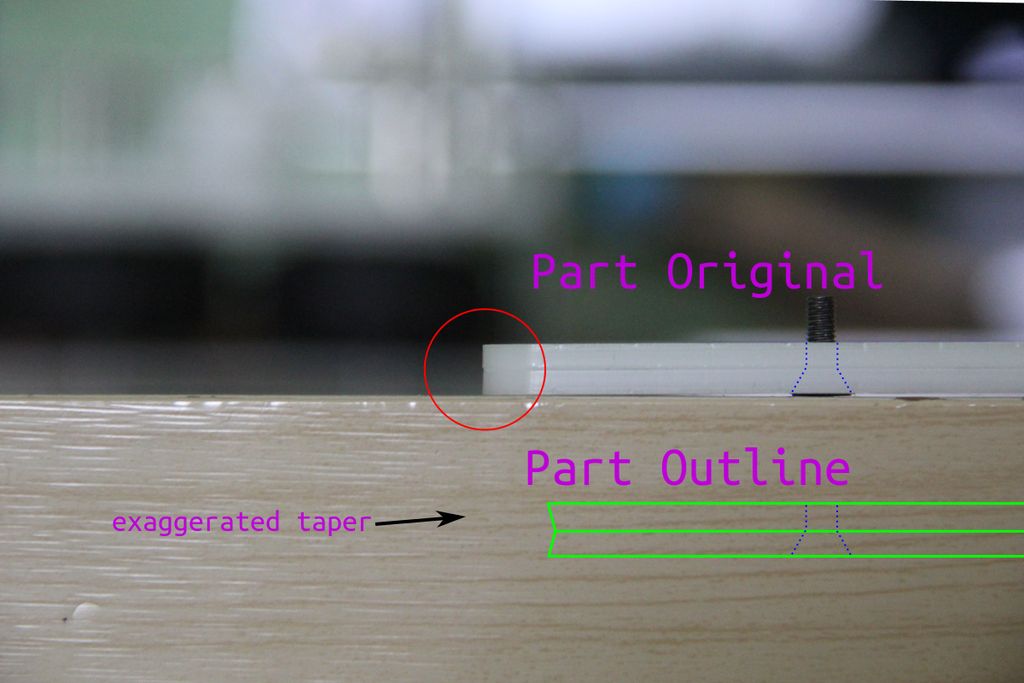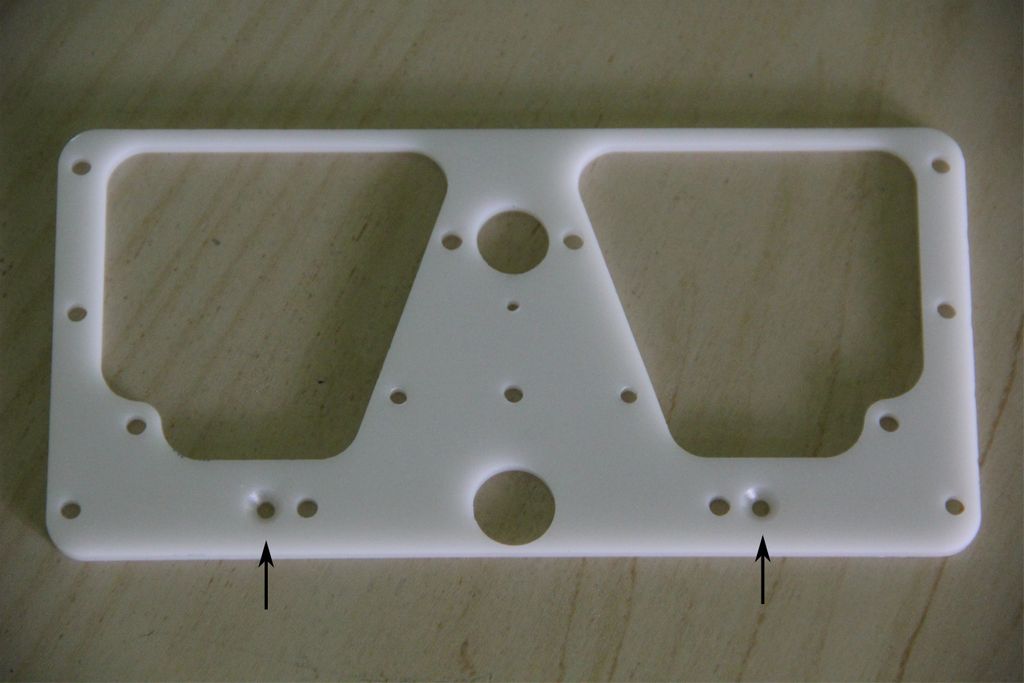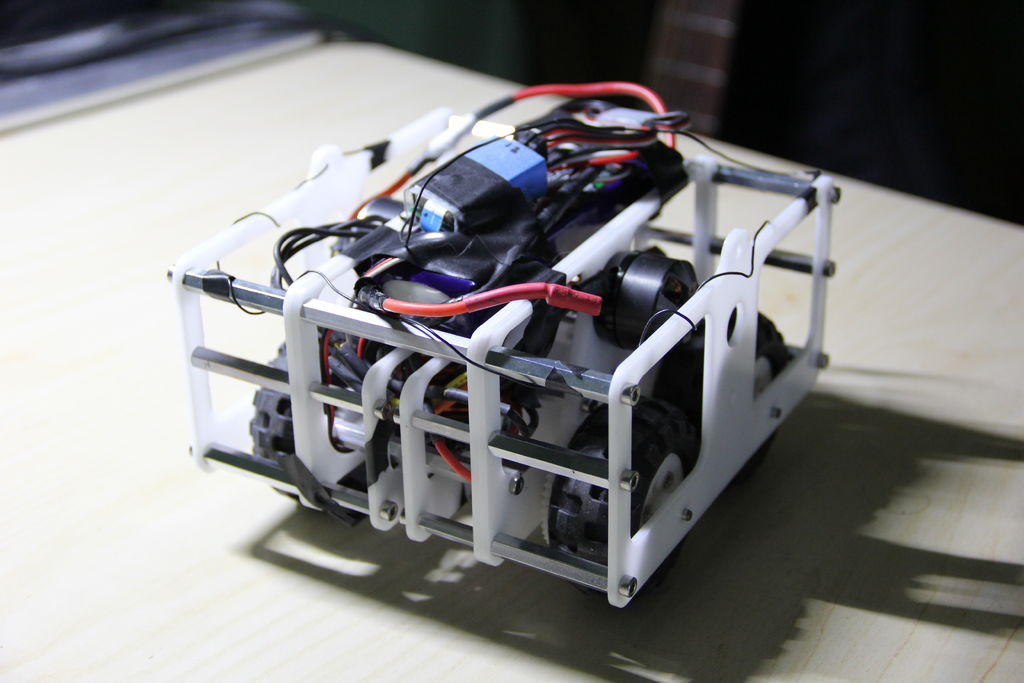GameCube-Bot 2
machine-shop free laser-cut edition
Along the journey without a full machine shop, I gave GameCube-Bot a reincarnation. Version 2, I’m happy to say, requires just a laser cutter, and an arbor press (ok ok, and a couple of drill bits, and a countersink). No machine shop required! If you’re looking to give combat robots a try, or you’d like to take a stab at some DIY home Arduino projects with a mobile base, I’m happy to present GameCube-Bot 2 in a friendly Instructable format–complete with all vector graphics for lasing.

Pushing Delrin as a material for structural parts
I cut all Delrin parts on a 60[W] laser cutter and designed the chassis around 16th, 3/32nd, and 1/8th [in] sheets sourced from Online Metals. Delrin, as opposed to acrylic, is far less brittle while still remaining fairly easy to laser-cut. Heh, at this point I’m someone righteously proclaiming this material as the material for laser-cut prototypes because of just how darn cleanly it cuts whie still being strong enough to handle light loads and impacts. In that sense both the chassis and some of the gears are made from this material. Delrin will return again in future projects!
The Design
Circumventing the Dreaded Taper
CO2 laser cutters these days focus the collimated beam down into a small point. This point has a very high power-per-unit area and ends up being the section of the beam that cuts the best. Since the collimated laser light is focused down into a point, the section from point to lens looks like a tapered cone of light, and since this cone is also hitting the material, we can actually see its effect on the edge of the parts that are cut.
In most cases, I’ll design around this issue by ensuring that the taper of the part does not impose of the overall design. Nevertheless, some features, like press-fits, do need a tight tolerance that gets compromised by this characteristic. To get around this issue, I tend to double-up on laser-cut plates and stack them in a mirrored configuration (see above).

Flushing Down Screws with Countersinks
Some of my plates couldn’t afford to have the heads of screws sticking up in this design, so I opted for some countersinks. Delrin is soo easy to work with that I could actually remove the material just by twirling the countersink around by hand.

Field Testing

With the internal chassis being made almost entirely of plastic, Gamecube-Bot-2 holds up just as well as the first one in all the environments that I’ve explored with it so far. (This includes the tree-uprooted asphalt on Stanford campus while passing the controller back and forth between a bunch of 3, 4, and 5 year-olds.)